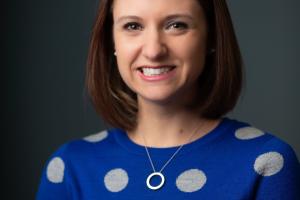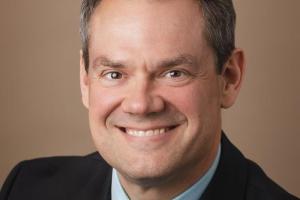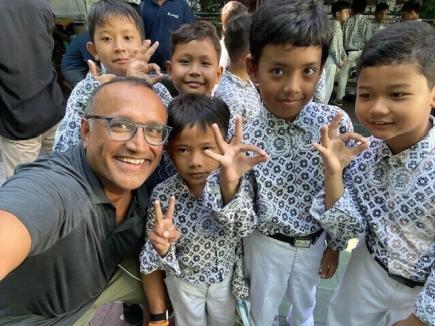
Patients are increasingly valuing sustainability as a priority in their lives and often consider a company’s business philosophy to protecting the planet.1-3 Optometry is no exception, and eye care professionals can make a difference, big and small, in their sustainability efforts.
For years, Dr. Raj Patel has adopted a sustainable mindset at his Vancouver, WA, practice, a passion that his entire staff also embraces. But a recent trip to Bali, Indonesia, for a Plastic Bank experience only heightened his commitment to being a thoughtful steward of the world, both in his community and continents away.
In this Q&A, Dr. Patel discusses the value of sustainability in practice, communication starters in the exam room, and his key takeaways from his unforgettable overseas experience with Plastic Bank.
What is the value of sustainability in practice?
Dr. Patel: The idea of preserving and protecting our environment is a message that resonates well in the Pacific Northwest. Most Pacific Northwesterners are conscientious of how we use our resources, so the idea of recycling hits well for our patients and staff. For two decades, we have recycled our cardboard, paper, and plastics within our offices. It started with our staff asking us to take a more proactive approach to waste. That staff member has been with me for over 20 years and still makes sure we do our part as a business to recycle as much as we can. For years, we have been a part of the TerraCycle® contact lens recycling program. Primarily, the sustainability message is delivered by our providers and contact lens technicians. Patients feel good knowing that we are cognizant of the environmental impacts of plastics. We tell our patients in the exam lane that they can bring all their used CL containers (they often bring them in bags and shoe boxes!). We partner with an organization that recycles. Since 2020, we have collected over 300 pounds of contact lens packaging.
How and when did you adopt a sustainability mindset in practice?
Dr. Patel: It started years ago at our staff meetings. Having a staff member as the champion of this cause has been the best for our practice. She first instructed our staff to periodically take the cardboard and paper from their departments (after crosscut shredding) to our collection points in the back office. Now it has become second nature. A few years ago, when I learned about CooperVision’s net plastic neutrality focus,*†‡§4,5 I shared that story at one of our staff meetings. It resonated with some of our team, who continue to tell that story to our patients.
In terms of logistics, it really is about carving out a few minutes at your staff meetings to discuss how your team feels about your green efforts and if they think you can do better. It takes a team’s excitement and ownership to get it moving in the right direction. For example, we set up large recycling containers in the back office area. We also placed small recycle bins under every workstation. The waste goes from workstation to bin to collection area in the back office. We have a staff of almost 30, so that means lots of workstations.
The cost to do this for our practice is insignificant. The real cost is in prioritizing the time at staff meetings to talk about sustainability, so it becomes part of the office culture. We are talking just 5 minutes to hit the highlights. In terms of CL packaging recycling, you can obtain collection boxes direct from TerraCycle which has branding related to CL recycling. We have a few in the office, but we get so much packaging that we just use a large box. Once the box gets full (approximately 1 month) we can get a free shipping label from TerraCycle and ship the box to them. We have a primary tech who oversees this, and her time to do this is less than 1 hour per month. The win in personal satisfaction for her is priceless.
What is your approach in talking about sustainability with patients and do you find them to be receptive to products manufactured with sustainability in mind?
Dr. Patel: In the exam lane, when we are connecting with our patients, the message may not resonate with every patient. But the more we tell the story, the more patients we connect with it. Patients are happy to support offices that align with their values. It creates an additional way to get “stickiness” with our patients. When it’s done in the exam lane, it takes just a few seconds, and it’s more personalized and meaningful than if the patients just see sustainability signs in our offices. I let the patient know they are wearing a contact lens that is made by a company that supports removing an equivalent amount of plastic waste from the oceans.◊6 For many, this makes them feel good from a social cause standpoint. If they ask how it’s done, then I talk about Plastic Bank. Most patients find it refreshing that the contact lens industry is trying to do their part in sustainability and environmental stewardship.
What is your impression of clariti® 1 day’s eco-conscious approach and how can net plastic neutrality translate into day-to-day practice?
I think it’s terrific that clariti® 1 day contact lenses are made in facilities that are LEED certified.¶7 It’s incredible that the facility in Costa Rica can recycle so many components in the manufacturing cycle. The net plastic neutral message translates well as patients seem to feel more comfortable in their single wear lenses when they know the organization that is creating them is working to protect the environment.◊6
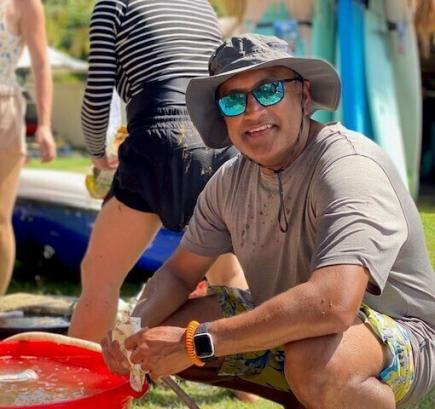
You recently joined CooperVision and Plastic Bank for a hands-on Plastic Bank experience in Indonesia. What were your main takeaways from the trip?
Dr. Patel: When I first stepped outside of the airport in Bali, Indonesia, I was immediately struck by the humidity and then the crowds. Nearly 5 million people live on this island, and Balinese are among the kindest people you will ever meet. I was there to see firsthand how the net plastic neutral contact lenses I’m prescribing §**5 are making an impact not only on the planet, but in the people who live in impoverished communities like Bali.§††6,8
This experience was made possible by CooperVision, who partners with Plastic Bank through funding the collection and recycling of ocean-bound plastic equal to the weight of the plastic contained in its most popular contact lens brands, including the lenses, blisters, and packaging.◊6Just seeing Plastic Bank’s operations, spending time with the collectors, and even participating in the collection myself gave me a much deeper understanding of the contribution we are making through our practice. And it made me want to do even more.
After my time in Indonesia, I don’t think I will ever look at plastic waste in the same way. I will never forget what it was like to work in the heat and humidity to extract plastic from the mangroves and feel like I was not even making a dent. There is so much plastic pollution in the streams and currents from the oceans that it can be overwhelming. But I realized that doing something is always better than doing nothing, and when put together, even the smallest efforts can make a huge impact. CooperVision’s net plastic neutral initiative is evidence of that.‡§5
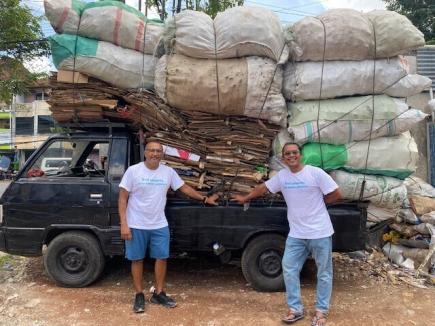
Above all else, it was special to see the difference being made in the lives of the people. Plastic Bank is focused on more than addressing the issue of plastic waste. It is also committed to empowering communities and local entrepreneurs to end poverty. Their collector members work to gather plastic waste and bring it in for processing, and in exchange, they receive credits that can be used for necessities such as groceries, cooking fuel, and school tuition.‡‡6
I returned to my practice with a renewed motivation to look at the way we use plastic in our office and do what we can to minimize it.
Find out more about CooperVision’s commitment to sustainability here.
Dr. Rajiv Patel graduated from the University of Houston College of Optometry. He completed a residency in Hospital-Based and Geriatric Eyecare at the Portland VA Medical Center, where he served as a clinical instructor to interns from two colleges of optometry. He has worked with the eye care community as an Adjunct Associate Clinic Professor with Pacific University College of Optometry and offered clinical procedures workshops for the Oregon and Alberta, Canada Optometric Associations. Dr. Patel runs the Vancouver Vision Clinic, a multi-OD and multi-location practice in southwest Washington.







